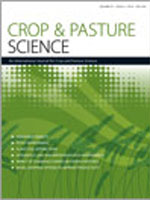We conducted greenhouse experiments to compare 14 lucerne (alfalfa, Medicago sativa L.) germplasms for their survival following freezing. Some are collections adapted to the Grand River National Grasslands in South Dakota. We hypothesised that these collections might have developed a tolerance to survive the frigid growth conditions common there. Two of these collections, River side (RS) and Foster ranch (FR), showed greater freezing tolerance than the other germplasms tested, based on their consistent survival rates with or without cold acclimation. In multiple freezing studies, RS and FR had average survival rates of 74% and 79%, respectively, in contrast to the commercial cultivars Apica and CUF-101 (CUF) (64% and 24%, respectively). The average temperature at which 50% of ions in plant tissues leak out (LT50) by freezing based on leaf electrolyte leakage was closely correlated with survival rates. Leaf LT50 improved 2–3-fold after 3 days of cold acclimation, based on leaf electrolyte leakage analysis, reaching −18°C, –9.6°C, –8.5°C, and −5°C for RS, FR, Apica, and CUF, respectively. Comparison of total soluble sugars and relative water content in shoots before and after cold acclimation showed that they were not well correlated with freezing tolerance and could not explain the superior responses of RS and FR during cold acclimation. Transcript analysis of cold-responsive MsCBF1, MsCBF2 and CAS15B genes showed that RS, FR, Apica and CUF exhibited distinct patterns of cold induction. Although RS, FR and Apica showed a rapid or greater increase in expression level of one or two of these genes, CUF showed only a moderate induction in MsCBF2 and CAS15B transcripts, suggesting that expression of these genes may be a good molecular marker for freezing tolerance in lucerne. The findings provide evidence that freezing tolerance in lucerne is a complex trait and that a combination of different mechanisms may greatly improve freezing tolerance. RS and FR are potential resources in breeding for improving freezing tolerance in lucerne.
How to translate text using browser tools
28 June 2016
Physiological and molecular characterisation of lucerne (Medicago sativa L.) germplasm with improved seedling freezing tolerance
M. Rokebul Anower,
Anne Fennell ,
Arvid Boe,
Ivan W. Mott,
Michael D. Peel,
Yajun Wu
ACCESS THE FULL ARTICLE

Crop and Pasture Science
Vol. 67 • No. 6
June 2016
Vol. 67 • No. 6
June 2016
gene expression.




